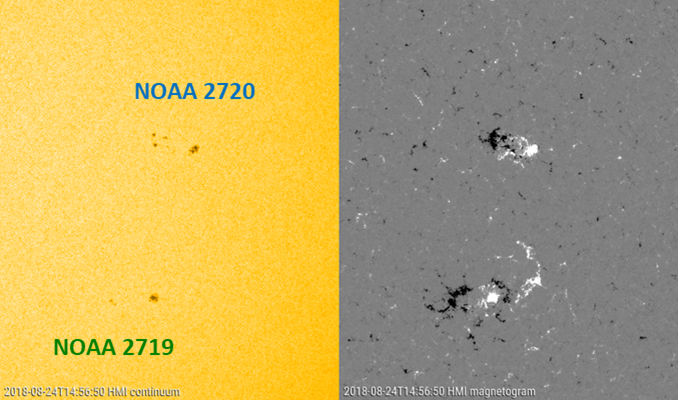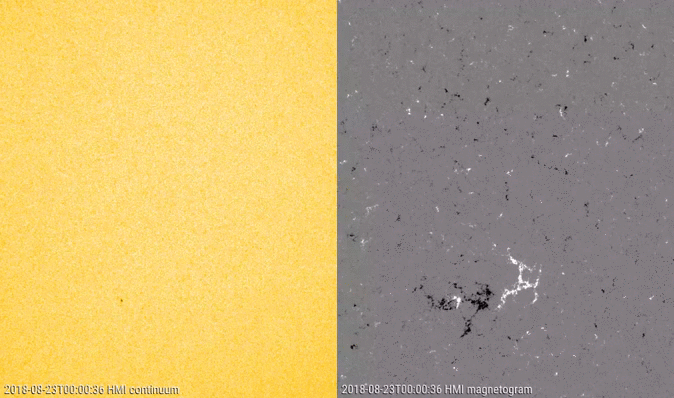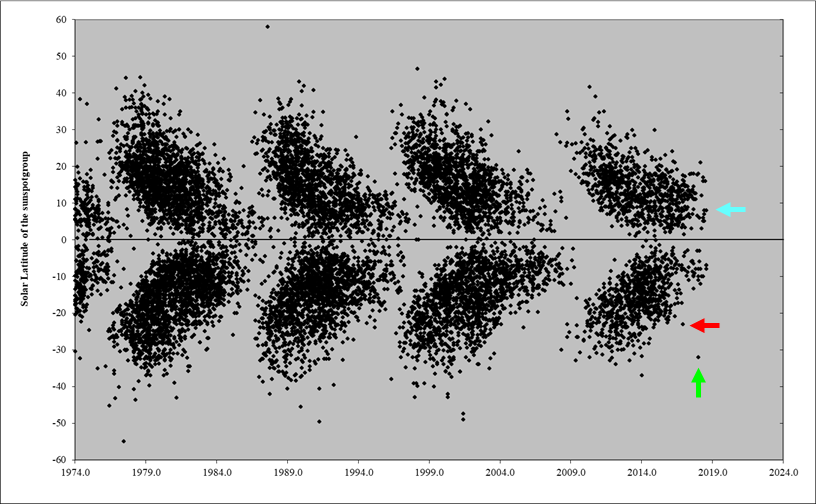NOAA 2720 started to develop on 23 August and became the largest sunspot group of the week. It had a reversed polarity, as can be seen in the SDO images underneath (left: white light; right: magnetogram). In the magnetogram, white means field lines coming out of the Sun, and black means returning to the Sun. Normally, a sunspot group on the northern hemisphere (NOAA 2720; top) should have a polarity opposite to that of the southern hemisphere (NOAA 2719; bottom), but it can clearly be seen that in both sunspot groups the leading spot has a positive magnetic polarity ("white").


Because of this reversed polarity, some websites claimed NOAA 2720 was possibly one of the first groups of the new solar cycle (SC25). This is simply not true, in view of the very low latitude of this sunspot region (N08). A new SC25 group should have reversed SC24 magnetic polarity and high latitude (20 degrees or higher). The "Butterfly diagram" underneath shows the position (latitude) of each sunspot group over time. Only two numbered sunspot groups can currently claim to belong to the new SC25 (indicated by red and green arrows). There are also a few other groups that belonged to the new cycle, but they were so small and short-lived they did not get a NOAA number and do not show up in this diagram. See this STCE newsitem for more info on these regions and their particulars. The diagram also clearly shows that NOAA 2720 (indicated by the blue arrow) does not belong to the new cycle.

During each solar cycle, about 3% of all active regions have a reversed polarity (and do not belong to the previous or next solar cycle). This percentage varies somewhat from one solar cycle to the next. With 2000 to 3000 sunspot groups per solar cycle, this means nonetheless that every solar cycle has a few dozens of this kind of bad boys.





